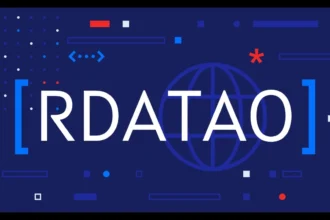Managing access to databases is crucial in today’s data-driven world. One command that plays a pivotal role in this process is “grant imp full_database to fintrak.” But what does it really mean? As organizations seek seamless collaboration while safeguarding their sensitive information, understanding database permissions becomes vital.
In this blog post, we will delve into the significance of managing database access and unravel the nuances of granting permissions. We’ll also explore Fintrak’s relevance and how you can effectively grant the full_database privilege. So whether you’re a database administrator or just curious about data security, stick around as we navigate through these essential concepts together!
What is a grant imp full_database to fintrak?
The command “grant imp full_database to fintrak” is a specific SQL instruction aimed at granting access rights within a database environment.
Essentially, it allows the user or role named “fintrak” to have comprehensive privileges over the entire database. This means Fintrak can perform various operations such as reading, writing, and modifying data without restrictions.
Understanding this command is crucial for organizations that utilize databases extensively. It ensures that the right entities have access to necessary information while maintaining security protocols.
In practice, this command enables seamless functionality for applications like Fintrak, which rely on robust data management systems. However, with great power comes responsibility; careful consideration must be given before executing such commands.
The Importance of Managing Database Access
Managing database access is crucial for any organization. It safeguards sensitive information and ensures that only authorized users can access specific data. This control helps prevent unauthorized actions that could lead to data breaches or loss.
Effective management of permissions also enhances operational efficiency. When employees have the right level of access, they can perform their tasks without unnecessary delays. Conversely, limiting access too strictly may hinder productivity.
Moreover, good practices in managing database permissions help organizations comply with regulations. Many industries face strict guidelines regarding data protection and privacy. Properly managed access controls contribute to meeting these essential legal requirements.
Reviewing and adjusting permissions regularly is necessary as business needs evolve. Keeping a close watch on who has what level of access reduces potential risks over time while ensuring smooth operations across departments.
Understanding Granting Permissions in Databases
Granting permissions in databases is a critical aspect of database management. It defines who can access what data and the actions they are allowed to perform.
At its core, permission granting involves assigning specific rights to users or roles. These rights might include reading, writing, updating, or deleting records. This structured approach helps maintain data integrity while ensuring that sensitive information remains secure.
Understanding user roles plays a vital role here. Different users may need different levels of access based on their responsibilities within an organization. For instance, administrators often require broader access compared to standard users.
Without proper permission controls, organizations risk exposing themselves to unauthorized data manipulation and security breaches. Thus, effectively managing these permissions creates a balance between accessibility and protection in any database environment.
Introduction to Fintrak and the Grant Imp Full_Database Command
Fintrak is a leading financial technology solution designed to streamline and enhance the management of financial data. It offers tools for reporting, analytics, and compliance that help organizations make informed decisions.
The command “grant imp full_database to fintrak” plays a crucial role within this ecosystem. By executing this command, users grant Fintrak comprehensive access to the entire database. This allows the software to perform necessary operations without restrictions.
Understanding how permissions work in databases is key. Granting full access enables seamless integration with existing systems while ensuring that Fintrak can function effectively.
However, it’s important to approach this command with caution. Proper understanding ensures that sensitive information remains protected while allowing for efficient data management and analysis through Fintrak’s powerful capabilities.
Steps to Grant Imp Full_Database to Fintrak
To grant the `imp_full_database` privilege to Fintrak, start by logging into your database as an administrator. This step is crucial for ensuring you have the necessary permissions to make changes.
Next, utilize a SQL command that specifies the user account associated with Fintrak. The syntax typically looks like this:
“`sql
GRANT IMP_FULL_DATABASE TO fintrak;
“`
Executing this command will allow Fintrak complete access to import data without restrictions.
After running the command, verify that the permission has been granted successfully. You can check user privileges by querying system views or using specific commands depending on your database management system.
Monitor any activities performed under Fintrak’s account regularly. This practice helps maintain security and assess how those permissions are being utilized within your environment.
Potential Risks and Precautions
Granting the command “imp full_database to Fintrak” can streamline access, but it also opens doors to potential vulnerabilities. When permissions are too broad, sensitive data may be exposed unintentionally.
One significant risk is unauthorized access. If users have more privileges than necessary, they could misuse the information or alter critical databases without proper oversight. This can lead to serious security breaches.
Another concern involves compliance issues. Organizations must adhere to regulations like GDPR and HIPAA, which require strict control over who has access to certain types of data.
To mitigate these risks, implement a principle of least privilege. Only grant essential permissions needed for specific tasks. Regularly review user roles and adjust them accordingly.
Ensure that robust monitoring systems are in place. Track changes made within the database and audit user activities periodically for any unusual behavior.
Conclusion
Granting access to databases is a critical task that requires careful consideration. The process of using “grant imp full_database to fintrak” opens up various possibilities for managing data effectively.
However, it’s essential to understand the implications behind this command. Each permission granted impacts security and operational efficiency significantly.
As you navigate through database management, always prioritize safety and compliance with best practices. This ensures your systems remain robust against potential threats.
Additionally, keeping communication open among team members can lead to better decisions regarding access control. Collaborating on these matters fosters a culture of responsibility within your organization.
Remember that knowledge about permissions is just as crucial as implementing them correctly. Stay informed and vigilant in maintaining your database’s integrity while leveraging its capabilities for growth.
FAQs
Q: What does the command “grant imp full_database to fintrak” do?
A: This command allows the user associated with Fintrak to have full access rights over the entire database. It is essential for users who need comprehensive control.
Q: Why is managing database access critical?
A: Managing access helps maintain security, ensuring that only authorized users can perform specific actions within a database. This protects sensitive data and supports compliance with regulations.
Q: Are there risks involved in granting full database permissions?
A: Yes, granting full permissions can lead to potential misuse or unintended changes by users. Careful consideration should be given before assigning such rights.
Q: How do I safely grant these permissions?
A: Always conduct a risk assessment first. Limit permissions based on necessity, monitor usage regularly, and review privilege assignments periodically.
Q: Can I revoke this permission later if needed?
A: Absolutely! Database administrators can revoke granted privileges at any time as long as they follow proper protocols.

















